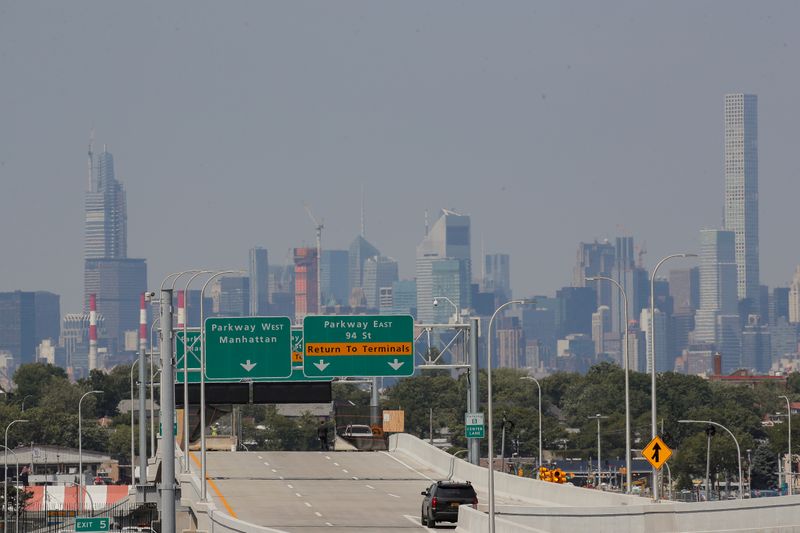NEW YORK (Reuters) – New York is facing a glut of workspace as fear of COVID-19 has reduced the daily usage of office buildings to almost nothing, a devastating sign for a city already reeling from the highest unemployment rate among the largest U.S. cities.
Manhattan’s density and sea of skyscrapers together hamper a return to the office on the island and that is unlikely to change until a vaccine allows the subway and elevators in office towers to run at full capacity.
Just 8% of employees have returned to Manhattan offices as of mid-August, the Partnership for New York City, a non-profit of nearly 300 chief executives, found in a survey of major city employers. The real estate industry is the most aggressive in returning, with 53% already back, the partnership said.
“The economy and people’s sense of their health go in lock step,” said Michael Cohen, president of the tri-state area at brokerage Colliers International Group Inc <CIGI.TO>.
“Until people feel safe enough to go back to the office, you can stand on one leg and spit nickels – they’re not going to revive this economy,” he said.
An increase in subletting and short-term lease renewals to more than 70% of deals shows management is uncertain about a company’s real estate needs after the success of working remotely.
Subletting now makes up more than 25% of space availability in two of Manhattan’s three submarkets, a level where supply outstrips demand, and at 23% for the island’s entire market, is at the highest level since 2010, Colliers said.
Average asking rents continued to climb to records in the first quarter when they peaked in Manhattan, and have since declined $2.03 per square foot to $78.01 in August.
Signs of increased subletting and its pressure on prices appeared relatively late compared to past recessions because brokers could not show clients office space until late July.
Leasing activity in August was almost 64% lower than the average monthly volume of 3.58 million square feet last year, according to Colliers.
“It’s no surprise that many tenants are seeking short-term lease extensions and are hesitant to make any long-term commitments towards their office space needs,” said Craig Bender, head of commercial real estate Americas at ING.
“This situation is going to persist until there is a clear path forward beyond the pandemic,” he said.
The downturn is not unique to New York and can be seen in the price of real estate investment trusts (REITs) that invest in East and West Coast office buildings. While the stock market has climbed more than 55% from the depths of the sell-off in March, the share price of office REITs have basically flatlined.
The market capitalization of office REITs that invest in mostly large coastal U.S. cities is about half what it was in mid-February when concerns about a coronavirus-induced recession drove investors to dump equities across the board.
The value that companies put on their office space is lower than it used to be,” said Scott Crowe, chief investment strategist at CenterSquare Investment Management in Philadelphia.
Cohen, like other executives involved in commercial real estate, doubts working remotely will become predominant as people will want to be near the boss as they look to step up the corporate ladder.
“I do not subscribe to this idea that we’re all going to be working remote forever because what’s going to happen is competitive forces both internal and external will force us back into the office,” he said.
However, Crowe acknowledged the office sector is in flux and is being priced in the REIT market “almost like it’s the next mall. Like it’s obsolete,” he said. “New York is probably one of the worst real estate markets in the country right now.”
(Reporting by Herbert Lash; Editing by Alden Bentley and Nick Zieminski)



























